Plastic materials
How can we divide the plastic materials?
The material determines the mechanical properties, the look and feel (sight and touch), and the accuracy of the parts produced by additive manufacturing.
The mechanical properties of polymers such as tensile strength, stiffness, elasticity and elongation at break depend on the intermolecular forces and the hydrogen bond;
The polymeric structure can be amorphous or crystalline, and they can coexist;
Thermoplastics are usually semi crystalline (combination of crystalline and amorphous);
Thermoplastic materials with amorphous structure have elastic properties, while crystalline structures have mechanical properties;
Plastic materials are divided according to the structure , of the resulting characteristics and from heating behavior .
They can be divided into three subjects:
Thermoplastics
(low / medium stiffness, elongation and stiffness – can melt and are reusable – allow plastic deformation when heated);
Thermosetting
(greater resistance to high temperatures – more fragile than thermoplastics – they do not melt and are not reusable);
Elastomers
(high elongation – high flexibility against its breaking or cracking)
HP Materials 5200 Series
HP supplies a line of engineering-grade polyamide-based thermoplastics designed for HP Multi Jet Fusion technology.
HP 3D High Resuability PA12
Provides a strong part, achieves waterproof properties. Ideal for final parts and functional prototypes with fine detail and dimensional accuracy
HP 3D High Resuability PA11
A renewable raw material, it has higher breaking strength and impact strength and offers a good balance between performance and reliability.
HP 3D High Resuability PA12 Glass Beads
Provides consistent performance with dimensional stability, stiffness and repeatability
Basf Ultrasint ™ TPU01
A highly workable multipurpose material that offers high flexibility, shock absorption and energy return.
HP 3D High Reusability PP
Provides chemical resistance, has low moisture absorption with excellent welding ability
Nylon PA12
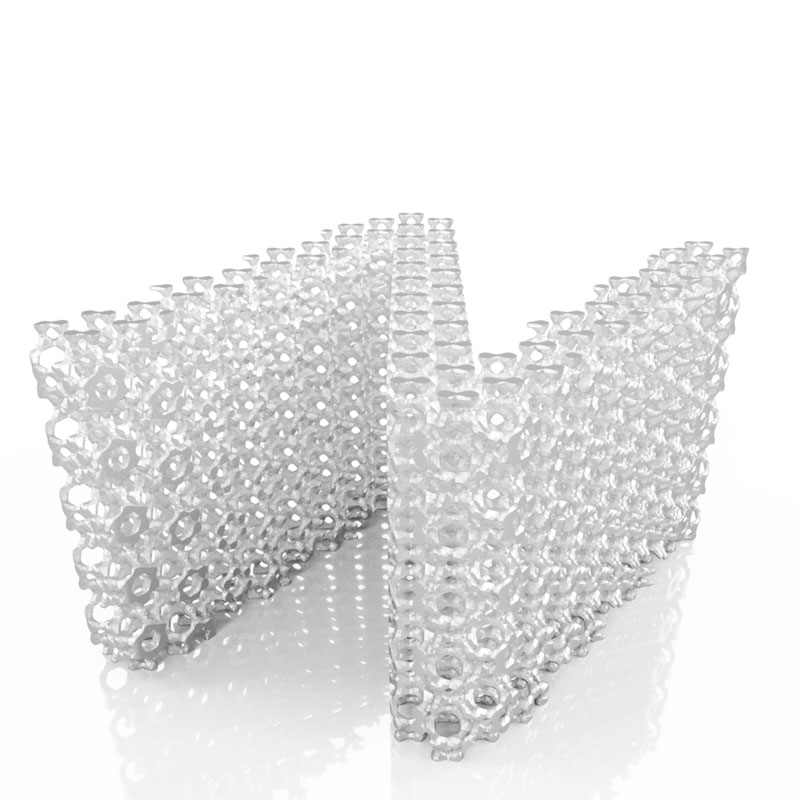
Nylon PA12 is one semi-crystalline thermoplastic material with a excellent relationship between strength characteristics is weight .
Printed in HP5210 Multi Jet Fusion is functional, has stiffness , perfect quality in detail on more complex designs and offers the better balance also in performance of the densest parts .
It is ideal for the creation of enclosures , fluid-tight elements , complex assemblies is housings , absorbing very little moisture .
This technology, for example, is also used for functional prototypes , for customized protections , for materials of gadgets , spectacle frames , molds is machinery equipment .
In the following table, we will specifically illustrate the mechanical properties values obtained by HP 3D HR PA12 in the HP jet Fusion 5200 3D printing solution with Balanced print profile and type I tensile samples, following the ASTM D638 standard.
Naylon PA 12 - I dati riportati scaturiscono da test effettuati all’interno dell’HP.
| HP 3D HR PA 12 | Asse (XY) | Asse Z | Metodo di prova |
| Resistenza alla trazione (Mpa) ⁱᵛ | 50 | 50 | ASTM D638 |
| Resistenza alla trazione (Mpa) ⁱᵛ | 1900 | 1900 | ASTM D638 |
| Allungamento allo snervamento (%) | 10 | 8 | ASTM D638 |
| Allungamento a rottura (%) | 17 | 9 | ASTM D638 |
| Resistenza all’impatto (kJ/m) | 4.2 | 3.8 | ASTM D256 |
| Densità (g/cm³) | 1.01 | 1.01 | ASTM D792 |
ⁱ. Based on internal testing and measured using HP Half_Commercial_Datasheet_Job work. The results can be from other works and geometries;
ⁱⁱ. Using HP3D HR PA12 material, 20% refresh ratio, balanced printing profile, natural cooling, and measured aer bead-blasting with glass beads at 5-6 bar;
ⁱⁱⁱ. Following all HP recommended printer setup and adjustment processes and printheads aligned using a semi-automatic procedure;
ⁱᵛ. Typical variation in tensile strength (95% of parts) is in the 45-55Mpa range, while tensile modulus values remain in the 1650-2200Mpa range;
ᵛ. Using the Izod A test method with notched specimen @ 3.2 mm according to ASTM D256;
The strength and elongation criteria are reported by the ASTM (American society for testing and materials)
The filaments used in FDM technology are wound into spools that feed the printer’s extruder. There are many thermoplastic materials used with different characteristics, the main ones include ABS, PLA, PET-G and PA12+CF.
ABS
ABS (acrylonitrile butadiene styrene) is an amorphous thermoplastic material consisting, like all polymeric materials, of a continuous phase and a dispersed phase: the former, given by the acrylonitrile-styrene group, confers characteristics of hardness, chemical and thermal resistance, while the latter, given by butadiene, confers characteristics of workability, mechanical strength and gloss.
The density varies between 1.03g/cm3 and 1.10g/cm3, with a yield strength of about 40 MPa and a strain at break of about 30 percent, presenting good stiffness, toughness (at low temperatures), impact and scratch resistance.
The melting temperature is 235°C, while the glass transition temperature is about 90°C, which is why the recommended operating temperature range is between -40°C and 85°C.
From a chemical point of view, it generally has low moisture absorption, high resistance to water and good resistance to salt solutions and dilute acids. In contrast, it is not resistant to concentrated mineral acids, aromatic hydrocarbons, chlorinated hydrocarbons, esters, ethers and ketones, also being soluble in acetone.
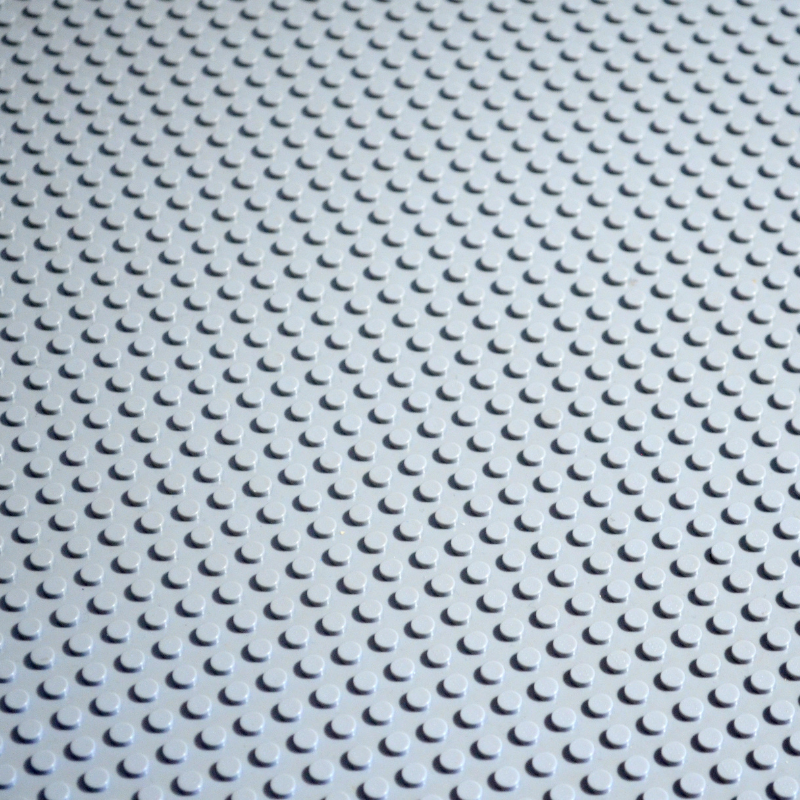
ABS FOOD
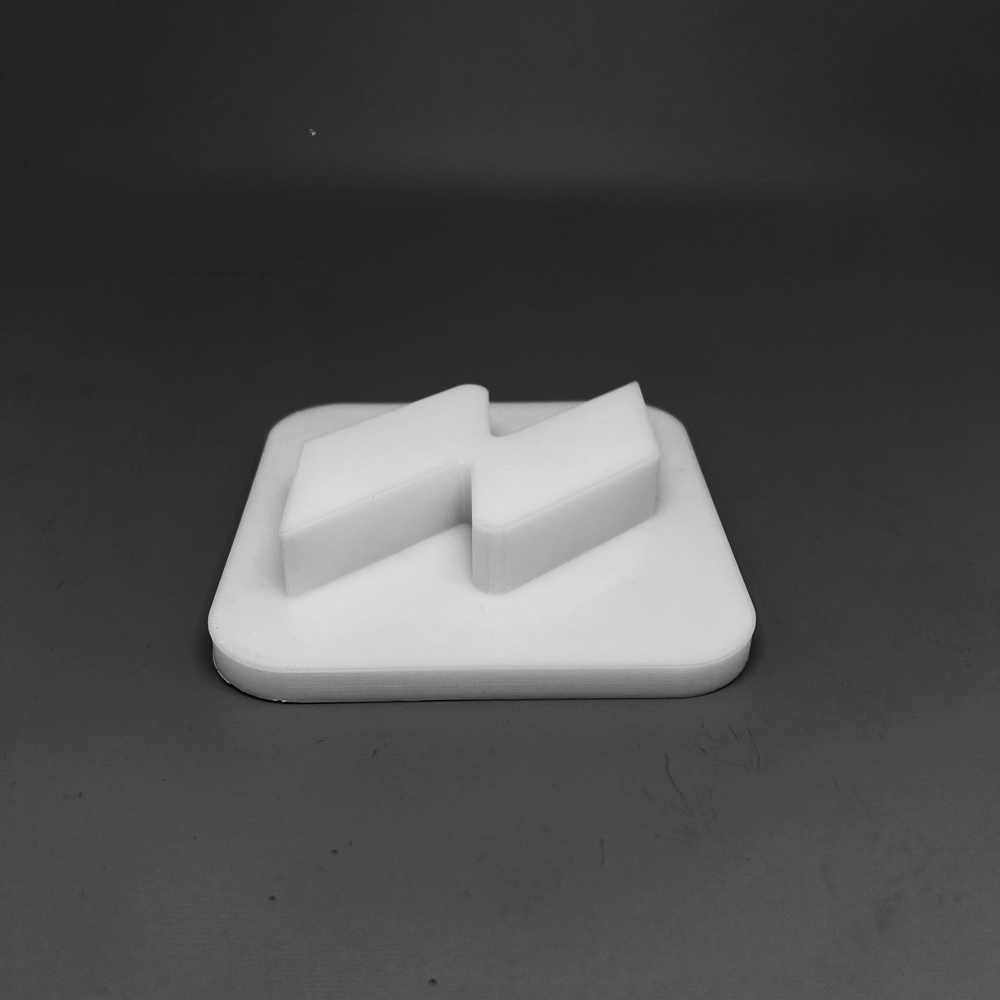
ABS-FOOD is a variant of ABS developed to meet the needs of thefood industry. This material has similar mechanical properties to standard ABS, such as density of about 1.05g/cm3, yield strength of about 40MPa and tensile strain at break of 30%, resulting in addition suitable for food contact according to Regulation (EC) No.1935/2004 and (EC) No.2023/2006.
The use of such material is suitable for making containers, packaging and instruments for handling of foodstuffs.
Although ABS-FOOD material is declared suitable for food contact, Niuo’s team is not qualified to issue any declaration of food contact suitability of parts produced using such filament. The Niuo team therefore disclaims any responsibility for consequences and effects resulting from the use and employment of parts made from such material.
This technology, for example, is also used for functional prototypes , for customized protections , for materials of gadgets , spectacle frames , molds is machinery equipment .
PET-G
PET-G (polyethylene terephthalate glycol), is a thermoplastic copolymer of the polyethylene terephthalate (PET) family to which glycol is added at the molecular level. Thus, in addition to having good chemical resistance, durability and processability, the material offers better mechanical strength, impact resistance and better heat resistance.
The density is about 1.27g/cm3, with a yield strength of about 50 MPa and a strain at break of about 25 percent, presenting good hardness.
The melting temperature is about 240°C, while the glass transition temperature is 80°C, which is why PET-G parts are not recommended for applications with operating temperatures higher than 70°C.
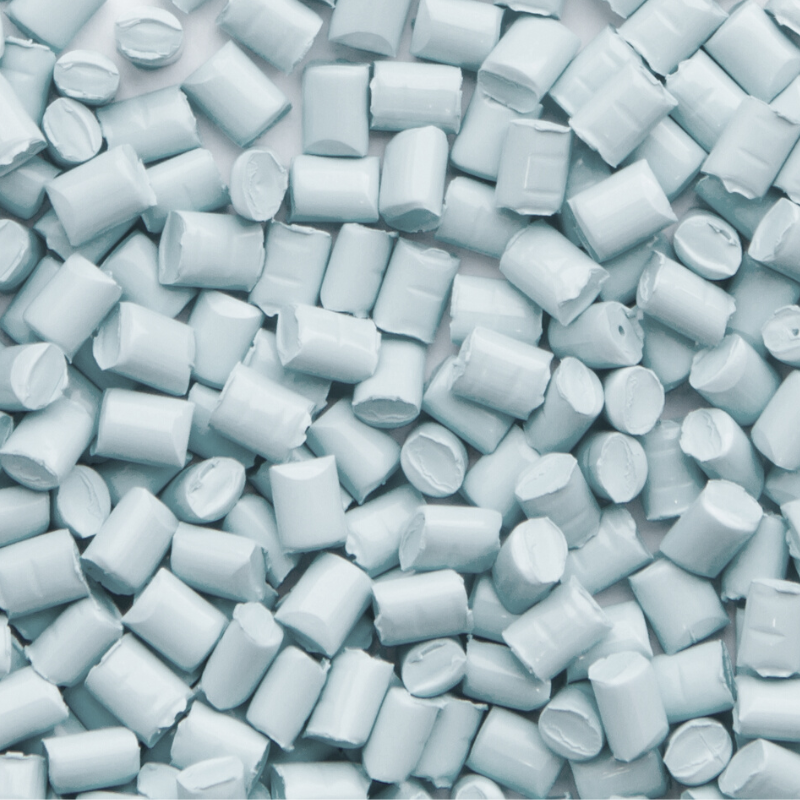
PLA
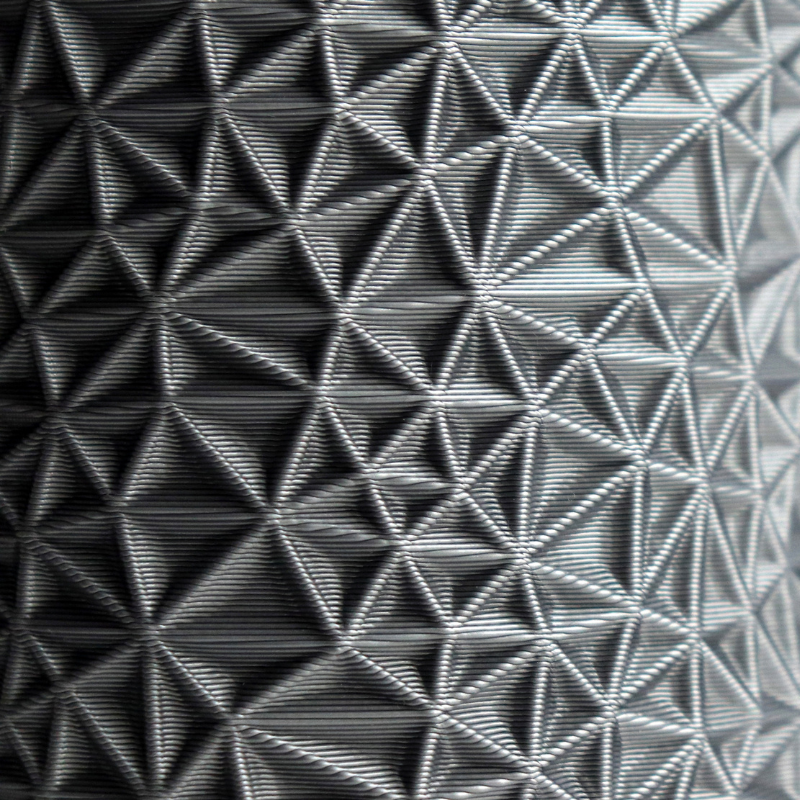
PLA (polylactic acid) is a thermoplastic polymer of plant origin, obtained by processing the by-products of corn and other vegetables, thus biodegradable.
It has a density of about 1.25g/cm3, with a yield strength of about 60 MPa and a strain at break of about 20 percent, presenting a fair stiffness.
Although from an ecological perspective the biodegradability of PLA is a strength, it is not from a performance point of view. In fact, prolonged contact with water or carbon dioxide, at temperatures around 60°C, promotes its degradation, compromising its functionality.
The melting temperature of about 120°C and the glass transition temperature of about 60°C, the lowest among common thermoplastic polymers in the field of additive manufacturing, are indicative of poor thermal resistance. In general, it is not recommended to use PLA parts for applications with operating temperatures higher than 55°C.
NYLON PA12 + CF
PA12+CF (carbon-reinforced polyamide) is a material developed specifically for FDM technology, going to disperse in the base polymer matrix, such as PA12, characterized by low moisture absorption, high strength, highwear and heat resistance and excellent chemical resistance, carbon particles, in order to reinforce the material.
The density is about 1.08g/cm3, with a tensile strength at break of about 120MPa and a strain at break of about 5%.
The melting temperature is about 175°C, while the softening temperature (VICAT) is about 165°C. It is not recommended to use PA12+CF parts for applications with continuous operating temperatures higher than 100°C.
The material is exclusively black in color.
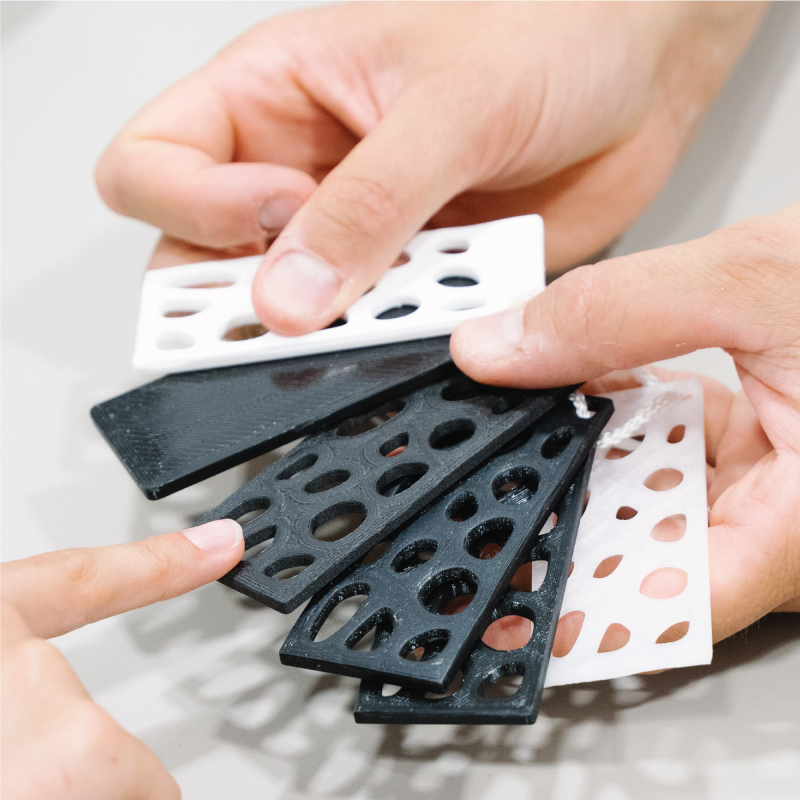
BASF Ultrasint® TPU01

L’Ultrasint® TPU01 è una polvere di poliuretano termoplastico (TPU) progettata e sviluppata da BASF specificamente per le stampanti HP Multi Jet Fusion. Questo materiale è ideale per la creazione di oggetti che necessitano di assorbire urti o che devono essere flessibili o elastici.
Estremamente facile da stampare, consente di realizzare geometrie complesse, come strutture reticolari. Ha una stabilità di processo molto elevata e, tra i materiali flessibili, offre uno dei maggiori rendimenti nel mercato della stampa 3D. Queste caratteristiche lo rendono perfetto per la produzione in serie con le stampanti HP Multi Jet Fusion.
Con l’Ultrasint® TPU01 è possibile ottenere componenti resistenti, flessibili e duraturi combinando un’eccellente qualità superficiale e livello di dettaglio. Il colore di base è grigio e la superficie presenta una certa rugosità, tipica dei prodotti ottenuti con processi di stampa 3D a base di polvere. Queste caratteristiche possono essere modificate con specifici processi di finitura.
Per quanto riguarda le proprietà meccaniche, l’Ultrasint® TPU01 è caratterizzato da una durezza di 88-90 SHORE-A, una resistenza alla trazione di 7-9 MPa, un modulo di Young di 85 MPa e un allungamento alla rottura di 150% in direzione Z (verticale) e di 280% in direzione X-Y. Inoltre, presenta una buona resistenza alla fatica. Come tutti i materiali, può presentare delle limitazioni a seconda delle esigenze specifiche dell’applicazione.
L’Ultrasint® TPU01 trova applicazione in vari settori, tra cui la produzione di attrezzature per la protezione sportiva, calzature, modelli ortopedici, componenti interni per auto e vari strumenti industriali.
Certifications HP 3D Hight Reusability PA12 material
HP 3D HR PA12
Summary of Regularity Compliance and Environmental Attributes
CERTIFICATE TECHNICAL NOTES
Add. Certiciation USP Class I-VI and US FDA guidance for Intact Skin surface devices
CERTIFICATE OF COMPOSITION
Statement of Composition for Toy Applications Certificate
Biocompatibility certificate
HP 3D600 / HP3D700 Fusing and Detailing Agents
PAHs CERTIFICATE
PAHs status of HP 3D600 / 700 Fusing and Detailing Agents
Reach / RoHS CERTIFICATE
HP Inc. Reach and RoHS status of HP 3D600 / 700 Fusing and Detailing Agent and HP 3D HR PA 12
Contact the Niuo Customer Care experts to find different solutions together and receive support.
Follow us on our social networks
Respect of the times
Once the order is confirmed, Niuo ensures delivery on time and undertakes to ensure that the deadlines are respected.
Repeatability
Thanks to the precision and accuracy of the machining it will be possible to produce repeatable pieces based on the required quantities.
Ready to get started?
Upload the file of your project to know the costs and time required for implementation.
Everything can be different. The impossible becomes possible.
The possible becomes simpler.


